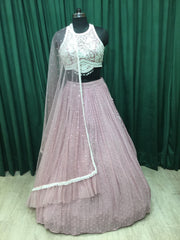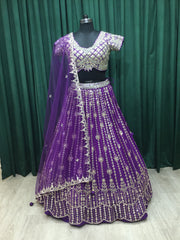How to Apply Mehndi Designs on Hand?
Outline of the Article
- Introduction to Mehndi
-
Preparing for Applying Mehndi
- Gathering Supplies
- Prepping the Skin
-
Basic Mehndi Designs for Hands
- Simple Patterns for Beginners
- Traditional Motifs
-
Step-by-Step Guide for Applying Mehndi
- Creating Henna Paste
- Using Cones for Application
- Techniques for Designing
-
Tips for Achieving Long-Lasting Mehndi
- Aftercare Practices
- Avoiding Water Contact
-
Intricate Mehndi Designs for Special Occasions
- Bridal Mehndi
- Festive and Elaborate Designs
-
Mehndi Trends and Innovations
- Contemporary Styles
- Fusion of Cultures
- Conclusion
How to Apply Mehndi Designs on Hand?
Mehndi, an ancient form of body art, has adorned hands for centuries, adding elegance and cultural significance to various festivities. From simple motifs to intricate patterns, applying mehndi designs on hands is an art that captivates enthusiasts globally. Let's delve into the process step by step.
Introduction to Mehndi
Mehndi, also known as henna, holds cultural and traditional value across diverse cultures. Derived from the leaves of the henna plant, it's used to create temporary tattoos on the skin. These designs vary from region to region, carrying symbolism and cultural meanings.
Preparing for Applying Mehndi
Before embarking on the application process, it's crucial to gather the necessary supplies, including fresh henna paste, essential oils, and applicator cones. Additionally, preparing the skin by cleaning it thoroughly and ensuring it's free from any oils or lotions aids in better henna absorption.
Basic Mehndi Designs for Hands
For beginners, starting with simple patterns is recommended. These designs often include basic floral motifs, leafy patterns, or geometric shapes. Traditional designs, such as paisleys or mandalas, also offer a great starting point.
Step-by-Step Guide for Applying Mehndi
- Creating Henna Paste: Mixing henna powder with essential oils and lemon juice creates a smooth paste, allowing for easy application.
- Using Cones for Application: Utilizing henna cones for precise drawing enables intricate detailing and controlled flow of the paste.
- Techniques for Designing: From outlining the design to filling it in, various techniques like dotting, lines, and shading enhance the overall look.
Tips for Achieving Long-Lasting Mehndi
To ensure the longevity of the design, aftercare is vital. Applying a sugar and lemon mixture or using sealants helps the color to deepen and last longer. Avoiding water contact and excessive scrubbing also preserves the richness of the henna.
Intricate Mehndi Designs for Special Occasions
For special events like weddings or festivals, intricate designs take center stage. Bridal mehndi involves elaborate patterns covering the hands and arms, often symbolizing love, joy, and prosperity.
Mehndi Trends and Innovations
The world of mehndi continues to evolve, blending traditional designs with modern styles. Contemporary patterns, fusion of cultures, and experimental techniques have emerged, allowing for unique and personalized designs.
Conclusion
Applying mehndi designs on hands is an art that intertwines tradition, creativity, and cultural significance. From simple motifs to intricate patterns, it's a form of self-expression that continues to captivate people worldwide.
FAQs
- How long does mehndi take to dry? Mehndi typically takes 2-3 hours to dry completely, depending on the paste's consistency and the climate.
- Can I shower after applying mehndi? It's advisable to avoid water contact for at least 6-8 hours post-application to allow the design to set properly.
- How long does mehndi color last? The color intensity of mehndi usually lasts for 1-2 weeks, gradually fading as the skin exfoliates.
- Can I create my own henna paste? Yes, henna paste can be made using henna powder, lemon juice, essential oils, and sugar.
- Are there any precautions to take before applying mehndi? Patch testing the henna paste on a small area of skin is recommended to check for any allergic reactions.




















































